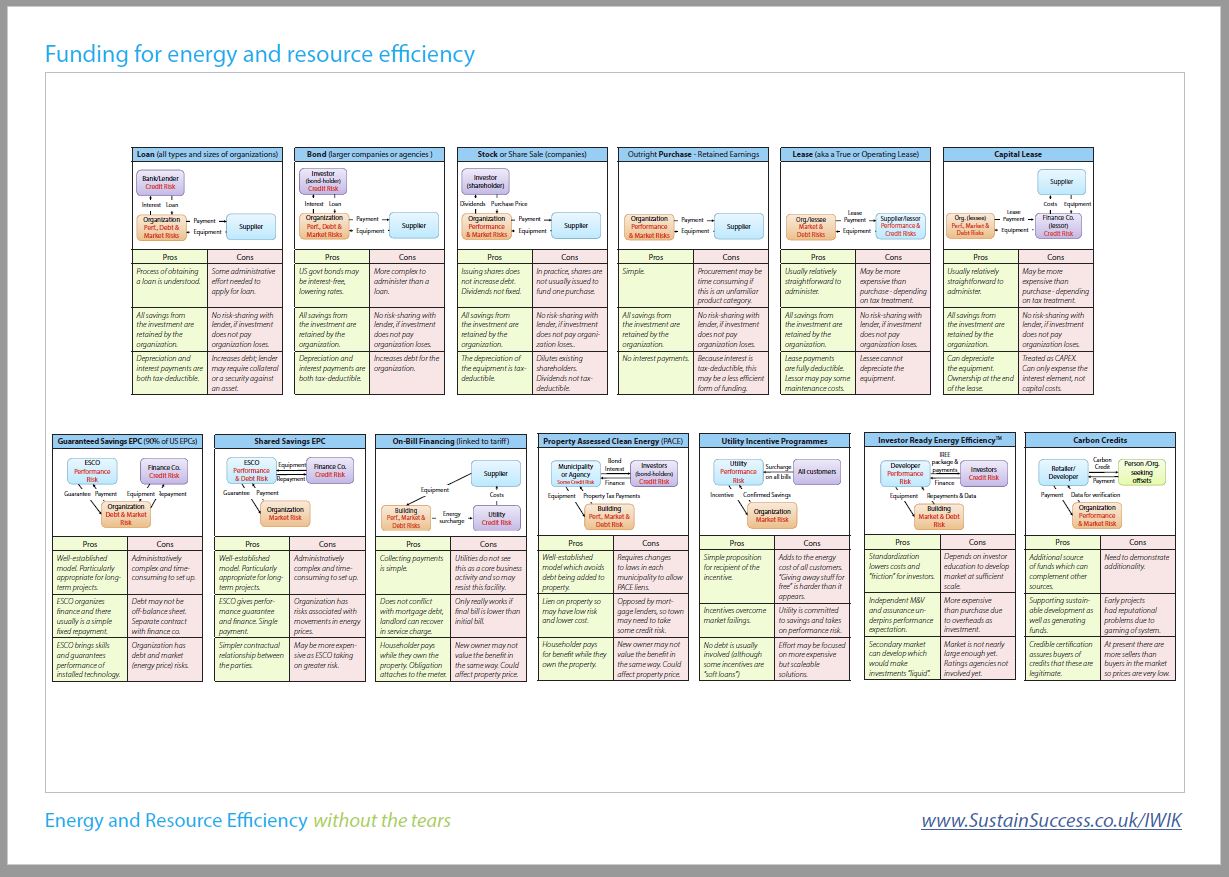Survey after survey** of energy management professionals show that a lack of resources is the most commonly cited cause for rejecting investments in energy and resource efficiency projects.
At the same time, the International Energy Agency’s World Energy Outlook 2012 reported that for their “Efficient World Scenario” that “Additional investment of US$11.8 trillion in more efficient end-use technologies is needed, but is more than offset by a US$17.5 trillion reduction in fuel expenditures and US$5.9 trillion lower supply-side investment.”
Clearly, a key to success in achieving a more efficient world is down to our ability, as efficiency practitioners, to obtain funding.
The excuse given by decision-makers that “we don’t have the money” is rarely true. If we are honest with ourselves, this response is often due to our own inability as practitioners to create a sufficiently compelling business case – one that addresses the many non-financial barriers that exist. My 840-page book on energy and resource efficiency is largely dedicated to sharing my own experience of these barriers and how they may be overcome:
- By properly quantifying the value that efficiency generates (e.g. dealing with hidden and missing costs, and valuing co-benefits)
- By understanding structural barriers (such as split incentives, irreversibility and term issues)
- By addressing psychological barriers (sunk costs fallacies, loss aversion, certainty bias etc.)
But let’s, for a moment, assume that there really is an availability barrier – i.e. no money. What then? Well, my book also describes 12 methods, in addition to conventional outright purchase, which can fund efficiency projects. Click the link below for a poster setting out the financial flows, pros and cons of these methods.
For a practical, comprehensive exploration of these challenges, please do download the free PDF of the book available on my website, which also describes each funding technique shown in the poster in detail. The book is full of real-world case studies and useful techniques that can help efficiency practitioners in any organisation, small or large.
In time decision-makers will gain appreciation of the great skills and value that our profession brings to organisations and communities. Indeed it us – efficiency practitioners – who are the key to solving the major challenge of our age: “how to do more with less”. Please do share this link with others to spread the word and share the knowledge.
** see for example: Prindle, William, and Andre de Fontaine. A Survey of Corporate Energy Efficiency Strategies, ACEEE Summer Study on Energy Efficiency in Industry 5, 13 (2009) or Institute for Building Efficiency. 2013 Energy Efficiency Indicators (2013)




0 Comments